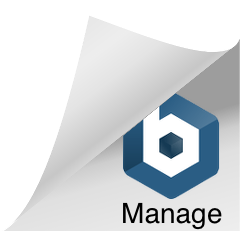Best Remote Employee Productivity Tools to Skyrocket Efficiency

Remote work is no longer an experiment or a temporary fix—it’s a fundamental shift in how organizations operate. According to Forbes, over 77% of remote employees report increased productivity, but success depends heavily on the tools that support remote collaboration and focus. Simply put, the right tools can turn a fragmented remote team into a highly engaged, productive powerhouse, while poor choices create confusion, stress, and disengagement.
“Technology is best when it brings people together.” — Matt Mullenweg, CEO of Automattic
Why Tools Matter More Than Ever in Remote Work
Remote employees face unique challenges beyond those encountered in physical offices: lack of shared context, risk of isolation, and blurred boundaries between work and life. Tools are the threads stitching together this new reality, making communication clearer, workflows transparent, and collaboration seamless.
Gallup’s 2024 research confirms this: remote workers who report having effective digital collaboration tools are 20% more engaged and 15% more likely to stay with their employer. Engagement and retention—the lifeblood of productivity—are tightly linked to technology that works, not just exists.
Core Categories of Remote Productivity Tools
- Communication Platforms: The Digital Town Square
Communication is the lifeblood of remote work. The right messaging and video platforms reduce friction and build connection.
Slack and Microsoft Teams dominate as platforms that unite chat, video calls, and file sharing in one place. They reduce overwhelming email traffic and enable real-time conversations that mimic office chats.
Newer AI-enhanced platforms like Pebb offer AI-driven conversation summaries and prioritization, helping teams cut through noise without missing key messages.
Forbes highlights that successful remote teams leverage these platforms not just for urgent chats but also to create “social presence”—channels for watercooler talk, celebrations, and human connection, which data shows independently boost productivity and morale.
- Project Management Tools: Visualize Progress and Accountability
Remote work is susceptible to siloed efforts and missed deadlines without clear task visualization.
Tools like Asana, Trello, and Notion offer visual task boards, dependencies, and milestones that clarify who does what and by when.
According to SHRM, teams using project management software are 30% more likely to meet deadlines and report higher clarity about responsibilities, which translates into less duplicated work and friction.
Integration is key: platforms that seamlessly sync with communication tools and calendars reduce the fatigue of multitasking across disconnected apps.
- AI and Automation: Free Your Cognitive Bandwidth
Repetitive tasks drain energy and focus—resources precious to remote teams needing every advantage.
Automation tools like Zapier connect apps to automatically move data and trigger actions, eliminating manual, error-prone steps.
AI assistants and meeting helpers like Zoom AI Companion can transcribe meetings, generate action item summaries, and manage follow-ups.
Time-saving innovations such as Text Blaze automate recurring typing tasks, and transcription tools, e.g., Votars, support multilingual teams by transcribing and summarizing calls.
Gallup’s data show that remote employees with access to AI-enabled automation report higher satisfaction and lower cognitive overload, allowing them to concentrate on creative and strategic work.
- Time Management and Focus Tools: Respecting Autonomy
Remote work blurs boundaries, threatening burnout and distraction. Time management solutions enable workers to self-regulate their days.
Tools like Hubstaff and Time Doctor provide gentle productivity insights, helping employees understand work patterns without feeling surveilled.
Focus apps such as Freedom or Cold Turkey block distracting websites during designated “deep work” periods.
Avoiding Tool Overload: Less Is More
Paradoxically, adding too many productivity tools burdens remote teams with constant context switching, which studies show can waste 20-40% of work time. SHRM cautions against “tool fatigue,” where employees juggle so many apps that none achieve mastery.Best Practice: Limit your core toolset to 3–5 integrated platforms. This focused approach ensures teams use each tool carefully and consistently, creating reliable rhythms and reducing cognitive drag.
Integrate Tools into a Holistic Productivity Culture
- Tools alone don’t guarantee success. Leaders must:
- Train teams on tool usage to maximize benefits.
- Establish protocols regarding which channels serve which purposes.
- Promote psychological safety to encourage asking for help or admitting struggles.
- Monitor mental health alongside metrics to detect signs of overload early.
Gallup emphasizes that technology-enabled productivity requires deliberate human-centered design—tools must support people, not replace or micromanage them.
Conclusion
In the new era, productivity is no longer measured by face time or hours logged but by value created, collaboration fluidity, and employee wellbeing. The right productivity tools, thoughtfully integrated, become a strategic advantage that multiplies team capabilities and engagement.
“The less you have to think about your tools, the more you can focus on your work.” — Anonymous
Building your remote productivity ecosystem around a small, powerful set of tools aligned with team workflows and culture is the foundation of sustainable success in today’s digital workplace.
References
https://www.forbes.com/sites/bryanrobinson/2023/08/12/remote-work-might-not-be-as-productive-as-once-thought-new-studies-show/
https://www.gallup.com/workplace/236441/state-american-workforce-report-2017.aspx









